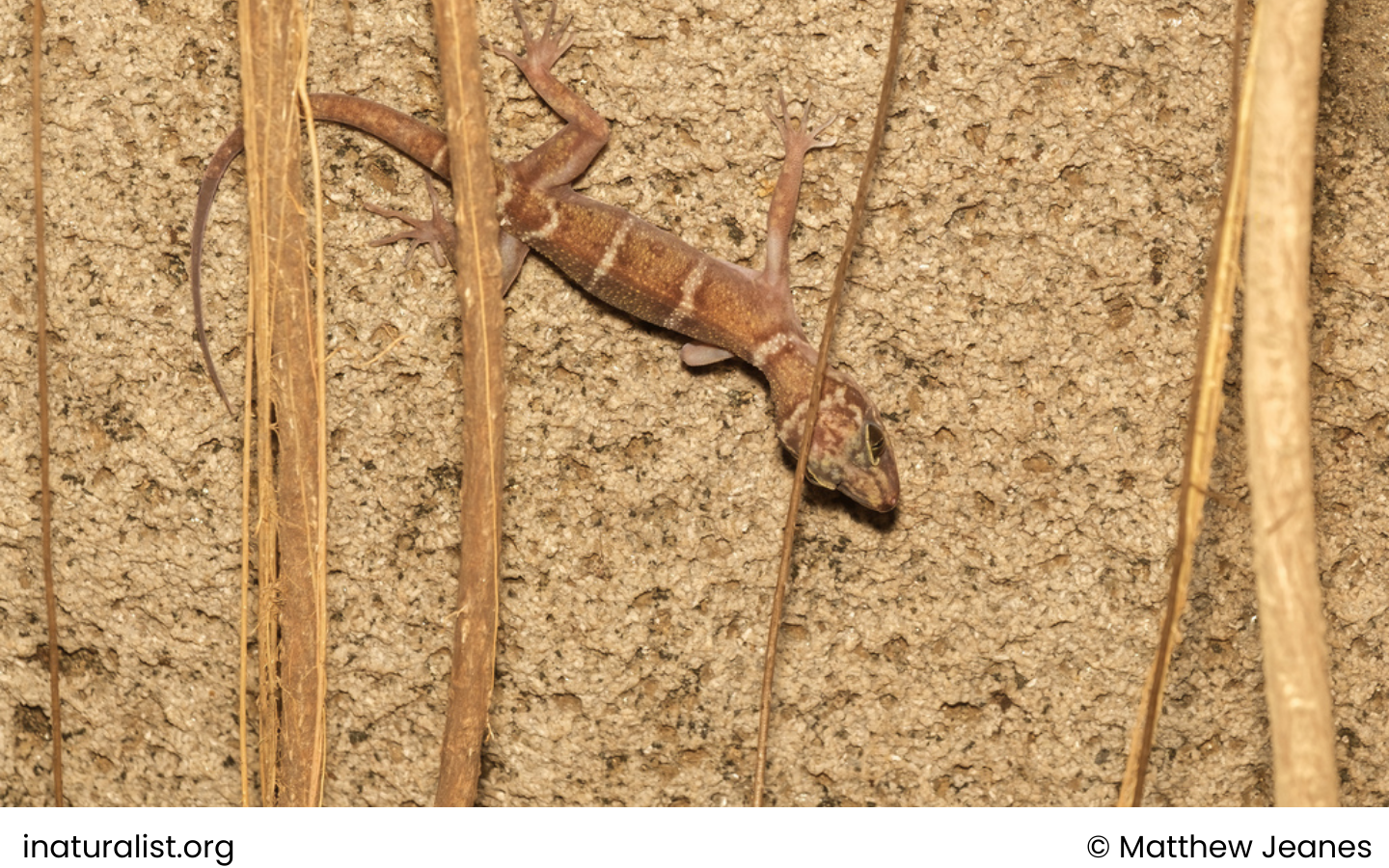
Science name: Cyrtodactylus grismeri – Ngo Van Tri, 2008
Taxonomic: Animalia>> Chordata>> Reptilia>> Squamata >> Gekkonidae >> grismeri
Species status: Endemic ; IUCN status: VU (Vunerable)
Description:
Physical characteristics:
Cyrtodactylus grismeri is a medium-sized gecko with a snout-vent length (SVL) ranging from 68.3 mm to 95.0 mm.
Its body is relatively robust, with long and slender limbs and digits. The original tail is very long, with a tail-to-SVL ratio of 1.24.
The species has a distinctive dorsal pattern consisting of thin, yellow-white bands on a brown-yellow background. There are one or two bands on the occiput, and 3–4 bands on the body between the forelimbs and hindlimbs.
The gecko has 16–19 interorbital scales and 24–27 scales between the eye and nostril. There are 33–38 ventral scales between the ventrolateral folds, and 18–22 irregular longitudinal rows of weakly keeled tubercles at midbody.
Males lack precloacal pores and a precloacal groove. There are 19–22 slightly enlarged precloacal scales, and 0–3 enlarged femoral scales beneath each thigh.
Subcaudal scales are transversely enlarged, forming broad plates.
Coloration and Appearance:
The dorsal coloration is yellow-brown with pale yellow or white transverse bands across the body and tail. These bands help camouflage the gecko in the rocky environments it inhabits.
Distribution and habitat:
Elevation: Found at around 100 meters above sea level.
Area: Cyrtodactylus grismeri is endemic to southwestern Vietnam, specifically in An Giang Province. The type locality is Tuc Dup Rocky Hill in Tri Ton District. This region is known for its volcanic rock formations and caves, providing a suitable habitat for this species.
Habitat: This species inhabits lowland tropical moist forests and caves, where it primarily resides within rocky environments. It is nocturnal and saxicolous, meaning it thrives in rocky terrains and caves.
Behaviour and ecology:
Lifestyle: Cyrtodactylus grismeri is nocturnal, emerging from rock crevices or caves at night to hunt for insects. During the day, it shelters in caves or under rocks.
Reproduction: This species is oviparous, laying 2 eggs annually, typically on rocky surfaces during the early rainy season.
Diet: It primarily feeds on small insects and other invertebrates found in its habitat.
Conservation and status:
IUCN Red List Category and Criteria: Listed as Vulnerable under criteria D2, due to its limited distribution and habitat specificity, which make it susceptible to habitat degradation.
Threats: The primary threat to Cyrtodactylus grismeri is habitat destruction caused by human activities such as quarrying and deforestation, which affect the caves and rocky areas it inhabits.
Remarks:
Cyrtodactylus grismeri was named in honor of Professor L. Lee Grismer for his extensive contributions to herpetological research in the Indomalayan region. The species’ common Vietnamese name, “Thằn lằn chân ngón Grismer,” translates to “Grismer’s bent-toed gecko.” This species is known only from its original description and its limited geographical range in An Giang Province, Vietnam.
Crocodile Trail – The Best Birding Trail in Cat Tien National Park
If you’re a birder or nature photographer planning a trip to Vietnam, few places offer [...]
Cong Troi Trail – Top 1 Dalat Plateau Birding Trail Experience
If you’re a birder or nature photographer planning a trip to Vietnam’s Central Highlands, the [...]
How to Identify the Greater Sand Plover, Tibetan Sand Plover and Siberian Sand Plover
Identification Differences within the Sand Plover Complex: The sand plover group, which was traditionally divided [...]
Highlights of Cat Tien National Park Reptiles and Amphibian Endemics
Spanning over 71,350 hectares of tropical forests, grasslands, and wetlands, Cat Tien National Park is [...]
Highlights of Cat Tien National Park Mammals in a World Biosphere Reserve
In addition to reptiles and birds, Cat Tien National Park is also rich in mammals, [...]
Kontum Plateau Endemic and Highlight bird
Kontum Plateau Endemic And Highlight Bird species like Chestnut-eared Laughingthrush and top birding routes while [...]